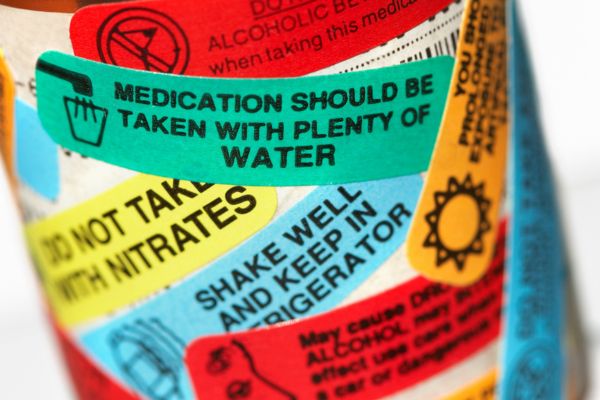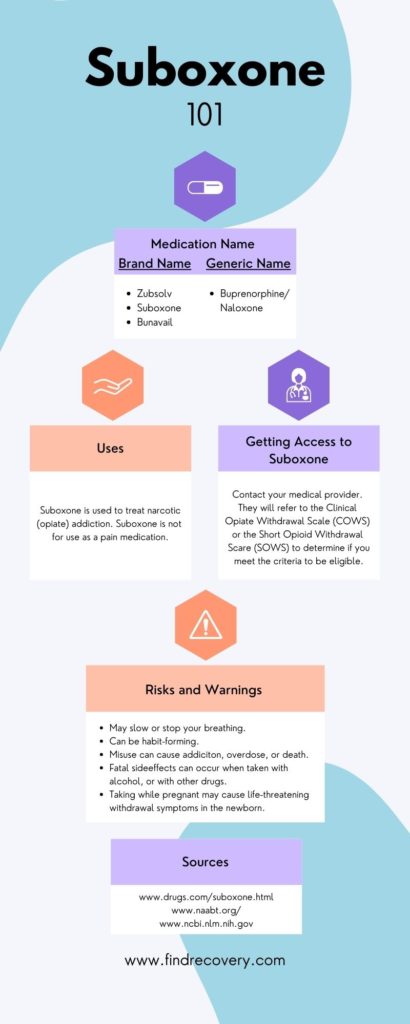Despite some pretty major similarities, including sharing the same first syllable, Subutex and Suboxone are not the same drug. They cannot be used interchangeably or substituted for one another (unless designated by a medical professional). Join us as we dive into the differences between Subutex and Suboxone, how they work, and which one is better to use for opioid addiction.
What is Subutex?
Subutex is the brand name of a prescription medication used in the treatment of opioid use disorder. Its active ingredient is buprenorphine, a very weak opioid, which is used as a pain reliever and to reduce the intensity of withdrawal symptoms.
Subutex is typically prescribed during the induction phase of treatment (i.e. the beginning of treatment), but after they have already gone through the initial withdrawal phase from other opioids. It may not be suitable for long-term maintenance therapy for some individuals
What is Suboxone?
Suboxone, on the other hand, is a combination medication. It too contains buprenorphine (though it is not the same as buprenorphine), which means suboxone is able to safely activate opioid receptors and make opioid withdrawal a lot less uncomfortable. However, the key to suboxone’s success is its other active ingredient: naloxone, an opioid antagonist.
Opioid antagonists are the opposite of opioid agonists and prevent opioid receptors from being activated. Suboxone has both, which makes it uniquely equipped to deal with some of the key challenges that can occur in medically assisted opioid addiction treatment.
Suboxone is used during both the induction stages of treatment as well as ongoing maintenance phases.
How Subutex and Suboxone are similar
Both Subutex and Suboxone are FDA-approved medications used in opioid addiction treatment. They belong to a class of drugs known as partial opioid agonists which means that they’re technically opioids, but extremely weak ones — a key factor to why they’re so effective and their use is so widespread.
Being opioids, Subutex and Suboxone are able to bind to opioid receptors in the brain, fulfilling the body’s physical dependence on opioids and thereby reducing cravings and withdrawal symptoms. And since they’re only partial opioids, they don’t cause euphoric highs like their predecessor, methadone, which is a full opioid agonist. As partial opioid agonists, these drugs carry a low risk of abuse or addiction.
The biggest difference between Subutex and Suboxone
The main difference between Subutex and Suboxone comes down to what they’re made of: Subutex’s only active ingredient is buprenorphine while Suboxone is a combination of buprenorphine and naloxone.
Buprenorphine is a key ingredient in both Subutex and Suboxone which enables both medications to be so effective at treating opioid addiction, and the presence of naloxone in Suboxone doesn’t change that. What it does affect is the potential for long-term use of a buprenorphine-based medicine and that is why suboxone is preferred for the long-term maintenance treatment of opioid dependence over Subutex.
What does naloxone do?
Naloxone is an opioid antagonist that blocks the effects of opioids at the receptor level. It’s the same active ingredient in the brand name medication, Narcan, that’s used to reverse an opioid overdose quickly.
Its purpose as part of a buprenorphine duo is to discourage misuse of the medication. If Suboxone is taken sublingually (placed under the tongue) as it’s supposed to be, the naloxone component has little to no effect. However, if someone tries to misuse Suboxone by injecting it, the naloxone becomes active and initiates some very unpleasant withdrawal symptoms very quickly. This makes suboxone much better equipped to deter misuse than subutex, which has no chemical safeguard.
What does buprenorphine do?
Buprenorphine is the key component in medication-assisted treatment (MAT) for opioid dependence and opioid use disorder. It’s a partial opioid agonist that activates opioid receptors enough to alleviate withdrawal discomfort without producing intense euphoria. In addition to being an effective treatment for opioid addiction, buprenorphine is also used for pain relief and as an anesthetic.
Buprenorphine is a controlled substance due to its opioid nature. It should always be used under the supervision and guidance of a qualified healthcare provider. While the potential for abuse and addiction is low, all opioids carry some risk and should be used cautiously.
Even though it’s only a partial opioid, buprenorphine has a long duration of action and half-life (between 25 to 70 hours). This is great for addiction recovery patients because it means that the medication’s effects provide relief for a long time and don’t require frequent dosages.
If you or a loved one are looking for relief from opioid dependence, you can talk to someone for free at an NA meeting near you.




